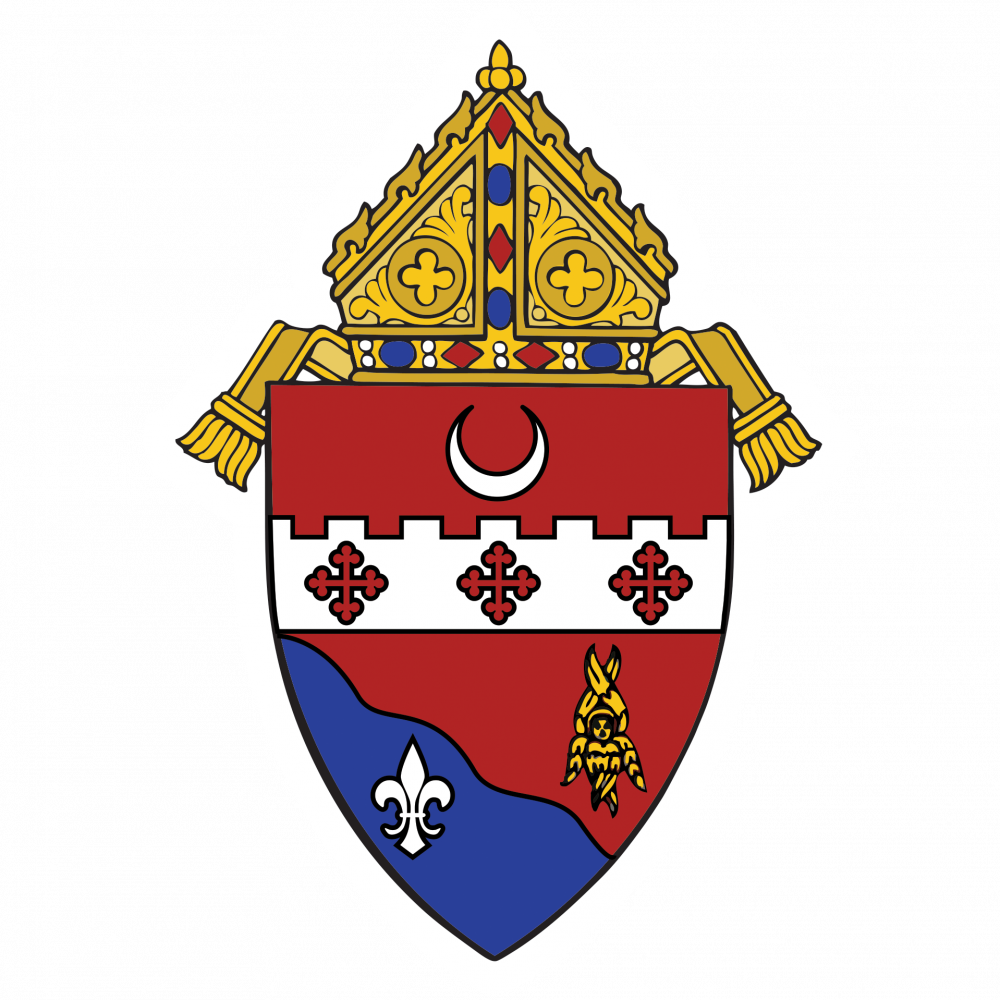About Us
Founded by Pope Pius IX in 1857, the Diocese of Fort Wayne-South Bend spans 14 counties in Northern Indiana and is under the leadership of Bishop Kevin C. Rhoades.
Northern Indiana’s first brush with Catholicism occurred in 1674 with the journeys of Jesuit priest Jacques Marquette and again in 1697 when French explorers traveled to the area that would become South Bend. These early Catholic missionaries preached to the Potawatomi and Miami tribes in the area. The area was then placed under the jurisdiction of the Diocese of Quebec, even though there were only a few established white settlements in this diocese prior to the Revolutionary War. During that time, Congress created the Northwest Territory, which included Indiana.
Indiana was granted statehood in 1816, but a new diocese was not designated until 1834, when Bishop Simon Bruté was installed as bishop of the Diocese of Vincennes, which included all of Indiana and parts of Illinois. Until the mid-1830s, northern Indiana was still populated mostly by the native tribes.
Immigration began to increase with the building of the Wabash and Erie Canal in the 1840s, followed quickly by the railroad lines. These advances brought more and more settlers from Europe to Indiana, who carved farming communities out of the fertile soil of the wilderness and requested priests to minister to their Catholic faith. Established in 1836, the first parish was St. Augustine in Fort Wayne. The church building, which was dedicated in 1839, would become the Cathedral of the Immaculate Conception. Around the same time, a group of priests and sisters of the Congregation of the Holy Cross, led by Father Edward Sorin, settled near the Michigan border and founded a school in 1842 that would develop into the University of Notre Dame.
With the growth of Catholicism in the area, Pope Pius IX finally established the Diocese of Fort Wayne on September 22, 1857, appointing Bishop John Henry Luers as the first bishop. For nearly a hundred years, the diocese encompassed the entire northern portion of Indiana, roughly all counties north of Marion County. In 1944 and in 1956 the Dioceses of Lafayette and Gary were created, significantly reducing the size of the Diocese of Fort Wayne. St. Matthew in South Bend was named co-cathedral to the Cathedral of the Immaculate Conception in Fort Wayne in 1959, and by 1960 the diocese was officially renamed the Diocese of Fort Wayne-South Bend.
The sources for the above account were taken from the following sources:
Alerding, Herman Joseph. “Diocese of Fort Wayne,” Volume 1. Fort Wayne: The Archer Printing Co., 1907.
“Fragments of History,” compiled by the Bishop John F. Noll, D.D., 1941.
Mather, George R. “Frontier Faith: The Story of the Pioneer Congregations of Fort Wayne, Indiana 1820-1800,” The Allen County-Fort Wayne Historical Society, pp 67-97.
White, Joseph M. “Worthy Of The Gospel Of Christ: A History of the Catholic Diocese of Fort Wayne-South Bend,” Fort Wayne: Our Sunday Visitor, 2007.
 A diocesan crest is a visual mark that seeks to encapsulate the unique identity of a particular diocese. The current diocesan crest was redesigned in 1960 to reflect the new designation to the Diocese of Fort Wayne-South Bend (now including the City of South Bend in the name). Under her title of the Immaculate Conception, the Blessed Virgin Mary is the patroness of the diocese, represented by the crescent moon at the top center of the shield.
A diocesan crest is a visual mark that seeks to encapsulate the unique identity of a particular diocese. The current diocesan crest was redesigned in 1960 to reflect the new designation to the Diocese of Fort Wayne-South Bend (now including the City of South Bend in the name). Under her title of the Immaculate Conception, the Blessed Virgin Mary is the patroness of the diocese, represented by the crescent moon at the top center of the shield.
The battlement or ramparts symbolize Fort Wayne’s history, and the three crosses in the center symbolize God as Father, Son, and Holy Spirit. The crest includes a six-winged seraph, the traditional symbol of the evangelist St. Matthew, patron of the co-cathedral in South Bend. The curving blue field in the lower-left corner symbolizes the St. Joseph River; the sharp turn of which gave South Bend its name. The fleur-de-lis points toward the French heritage of the diocese’s early pioneers. Its lily shape is also a traditional emblem of Mary as well as St. Joseph, for whom two rivers and one county in the diocese are named.
The current diocesan crest was redesigned in 1960 to reflect the new designation of Diocese of Fort Wayne-South Bend (including the City of South Bend to the name). Under her title of the Immaculate Conception, the Blessed Virgin Mary is the patroness of the diocese, represented by the crescent moon at the top center of the shield.
The battlement or ramparts symbolize Fort Wayne’s history, and the three crosses in the center symbolize God as Father, Son, and Holy Spirit. The crest includes a six-winged seraph, the traditional symbol of the evangelist St. Matthew, patron of the co-cathedral in South Bend. The curving blue field in the lower-left corner symbolizes the St. Joseph River; the sharp turn of which gave South Bend its name. The fleur-de-lis points toward the French heritage of the diocese’s early pioneers. Its lily shape is also a traditional emblem of Mary as well as St. Joseph, for whom two rivers and one county in the diocese are named.
Throughout its history, the diocese has been served by nine bishops:
- Bishop John H. Luers – 1857-1871
- Bishop Joseph G. Dwenger, C.PP.S. – 1872-1893
- Bishop Joseph Radamacher – 1893-1900
- Bishop Herman J. Alerding – 1900-1924
- Bishop John F. Noll – 1925-1956
- Bishop Leo A. Pursley – 1957-1976
- Bishop William E. McManus – 1976-1985
- Bishop John M. D’Arcy – 1985-2009
- Bishop Kevin C. Rhoades – 2009-Present
